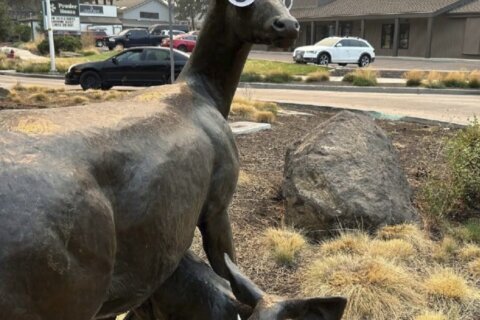A boa constrictor in the U.K. gave birth to 14 babies — without a mate.
Is it a miracle? The result of a secret rendezvous? Probably not. Females of species have the ability to reproduce asexually, without sperm from a male. The process is called parthenogenesis, from the Greek words for “virgin” and “birth.”
Some plants and insects can do it, as well as some amphibians, reptiles, birds and fish. A stingray named Charlotte that was thought to have become pregnant by this method died this week at an aquarium in North Carolina, though she never delivered and it is unclear if she was ever pregnant.
Some wasps, crustaceans and lizards reproduce only through parthenogenesis. But in other species it’s rare and usually observed in captivity.
It tends to occur in situations where females are separated from males, said Demian Chapman, who directs the Sharks & Rays Conservation Research Program at the Mote Marine Laboratory & Aquarium in Sarasota, Florida.
The boa in the U.K., a 6-foot, 13-year-old Brazilian Rainbow Boa named Ronaldo, gave birth last week after having no contact with any other snakes for at least nine years, according to the City of Portsmouth College, which kept the snake.
One way parthenogenesis can occur is when a female’s egg fuses with another cell, often a cell leftover from a process that allows the female to create the egg. That cell, known as a polar body, gives the egg the genetic information it would normally get from sperm. The cell starts dividing and that leads to the creation of an embryo.
It’s unclear how prevalent parthenogenesis is in the wild, Chapman said. But it has happened outside captivity among smalltooth sawfish, an endangered species in Florida’s coastal waters.
“We think the females reproduce like that on some occasions because they haven’t found a male because there are so few of them,” Chapman said.
Offspring from parthenogenesis have less genetic variation, Chapman said, which can lead to developmental problems.
“A litter produced by sexual reproduction is usually much larger than one produced via parthenogenesis if it’s an animal that gives birth to litters,” Chapman said. “And you will often see individuals in that litter produced by parthenogenesis that don’t develop correctly in some way.”
___
The Associated Press Health and Science Department receives support from the Howard Hughes Medical Institute’s Science and Educational Media Group. The AP is solely responsible for all content.
Copyright © 2024 The Associated Press. All rights reserved. This material may not be published, broadcast, written or redistributed.







